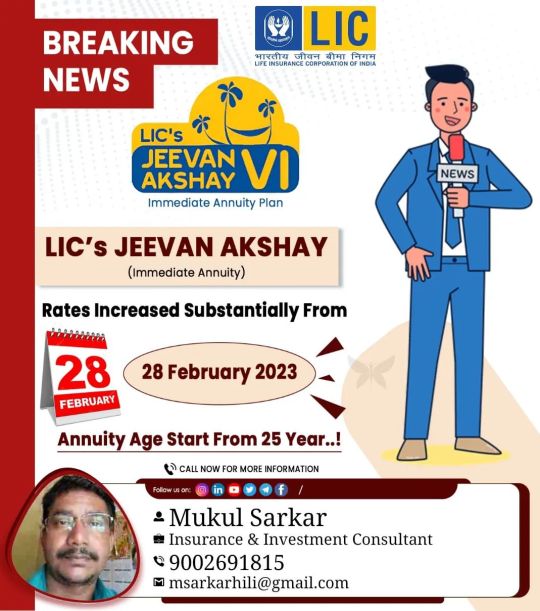#CPST
Text
Things you will need as a mom!
There is something that happens the moment you become a mom. Immediately we want the best for our children, and that includes providing them with the right tools and equipment to help them grow and thrive. Whether you are a first-time parent or have multiple children, it can be overwhelming & quite expensive deciding which items are essential for your child’s development and well-being. I’m going…
View On WordPress
#amazon affiliate#carseat#carseatsafety#CPST#methodofmadnessMOMblog#mom#momblog#must haves#stroller#wagon#what you need for kids
0 notes
Text
COMPLETE PENOSCROTAL TRANSPOSITION WITH MULTIPLE CONGENITAL MALFORMATIONS by Jafari B. Lutavi in Journal of Clinical Case Reports Medical Images and Health Sciences

SUMMARY
Penoscrotal transposition (PST) is an extremely rare congenital anomaly of the external genitalia, characterized by malposition of the penis in relation to the scrotum. PST can be either complete or incomplete according to the positional exchanges between the penis and scrotum and both forms of PST are generally linked with hypospadias. Incomplete transposition is the common form of this entity and the penis lies in the middle of the scrotum, but complete transposition, the scrotum almost entirely covers the penis, which emerges from the perineum. Both forms are most often associated with a wide variety of other anomalies. We describe a case of a newborn with complete PST, with other associated malformations.
BACKGROUND
Penoscrotal transposition (PST) is a rare anomaly of the external genitalia, characterized by malposition of the penis in relation to the scrotum1,2,3. PST can be defined as either complete or incomplete according to the positional exchanges between the penis and scrotum and both forms of PST are generally linked with hypospadias. Incomplete transposition is the common form of this entity and the penis lies in the middle of the scrotum, but in complete transposition, the scrotum almost entirely covers the penis, which emerges from the perineum1. PST was first reported by Appleby in 1923. Patients with PST often have accompanying urological abnormalities, such as chordee, hypospadias, and vesicoureteric reflux4.
The etiology and embryological sequence abnormalities that occur in PST is still unclear. The genital tubercle and the labioscrotal swellings are the embryological origins of the penis and scrotum, respectively. During normal embryonic development, in the 9th–11th week, the scrotal swellings migrate infero-medially and fuse in the midline caudal to the genital tubercle that forms the penis by the 12th week of gestation. This is usually achieved under the influence of androgens and poor response or absence of androgens results in abnormal migration of the scrotal swellings3. Somoza et al suggested that an abnormal positioning of the genital tubercle at the 6th gestation week (GA) concerning the scrotal swellings or a defective gubernaculum leads to PST2.
Complete penoscrotal transposition (CPST) is frequently characterized by major and often life-threatening anomalies involving the urogenital, cardiovascular, gastrointestinal, and skeletal systems2. Common genital anomalies include hypospadias and chordee, and 100% of cases have a renal defect.
CASE PRESENTATION
A gravida 5, para 1, living 1 with 3 abortions woman aged 27 years was referred from Mwananyamara Referral Regional Hospital and admitted to Obstetrics and Gynecology department at Muhimbili National Hospital- Mloganzila. She has a referral diagnosis of antepartum hemorrhage and severe oligohydramnious at GA of 30 weeks 2 days. She had three previous pregnancy loses: 1st and 2nd loses both at 12 weeks GA with 6 months between the loses; her 3rd loss was 2 years after she had a term healthy baby by normal delivery.
She had no histories of phenotypic genetic abnormalities in their families, illicit drug use, cigarette or alcohol consumption, no chemical, radiation exposure, or any chronic illness. She is married, and is a university graduate, working as a transportation officer. She attended antenatal clinic (ANC) five times and all her laboratory work-up such as blood count indices, blood grouping, urinalysis, stool examination, and microscopy, and fasting blood sugar were normal. She was HIV negative and blood film for malaria parasites came back negative. Record of the ultrasound scan taken at 6th -week gestation indicates early multiple pregnancy (two gestational sacs seen) and the next scan performed at 27th weeks GA show a normal single fetus with no anomaly. She was given iron and folic acid supplements, received Tetanus Toxoid vaccine twice, sulfadoxine-pyrimethamine (SP) tables twice as part of intermittent preventive therapy for malaria and she was dewormed using Mebendazole. With her history of pregnancy loss and complaints of abdominal cramps, she had been kept on bed rest at home from 16th week of gestation as recommended by her obstetrician at Mwananyamala Hospital.
After she was brought to our hospital she had active vagina bleeding. A bed side ultrasound revealed placenta previa grade 3 and she was planned for emergency hysterotomy. She delivered a male baby, 1750 gm, who did not initiate spontaneous breathing after birth. The baby was initially resuscitated with a bag and mask before intubation at age 5 minutes. He was assigned an Apgar score of 3, 1, 4 at 1st, 5th and 10th minute respectively. On examination, baby had severe pallor, occipital-frontal circumference – 29cm, communicating anterior and posterior fontanelle, low set ears, short neck, wide-spaced nipples, undescended testes (empty scrotum), inverted genitals (CPST) with hypospadias (Figure 1), rectal atresia, prominent heel, and bilateral talipes equinovarus.
https://jmedcasereportsimages.org/wp-content/uploads/2022/10/fig-1-2.jpg
Figure 1: (a) shows a horizontal view of complete penoscrotal transposition and (b) shows an oblique view of complete penoscrotal transposition.
DISCUSSION
Penoscrotal transposition (PST) is a congenital urogenital anomaly described first in 1923 by Appleby. The embryological sequence responsible for this malformation remains unclear; however, it has been suggested that an abnormal positioning of the genital tubercle in relation to the scrotal swellings during the critical fourth to the fifth week of gestation could affect the migration of the scrotal swellings2. In this case report, there is a complete exchange of position with the scrotum located superior to the penis, which is inferior to scrotum. (Figures 1(a) and 1(b)). Also, there presents a spiral and hypoplastic penis crooked toward the anal position. Ayamba et al reported the same findings whereby noticed complete transposition of the external genitalia with cryptorchidism, hypoplastic penis from the perineum just above the blind anal position, and caudal to the scrotum3. Somoza et al also noted at birth a newborn has a complete transposition of the external genitalia, a 3.5-cm-long, hypospadic, and hypoplasic penis arose from the perineum, just above the anus and beneath a normal scrotum1–3,5.
CPST is often characterized by major associated malformations. Our baby had also other multiple physical abnormalities such as short neck, low set ears and talipes equinovarus. Unfortunately, due to our limited resources, we could not complete imaging of internal organs. Previous reports of CPST have also noted presence of other malformation with 100% occurrence of renal anomalies. For example, Parida et al had noted major renal anomalies in the form of agenesis, horseshoe kidney, ectopic and dysplastic kidney, obstructive uropathy, and hydronephrosis. Other systemic abnormalities are mental retardation, anorectal malformations, central nervous system, skeletal and cardiological defects5. In our case, we did not perform imaging to detect renal anomalies, but literature suggests most likely there were there. The detection of CPST should warrant careful clinical evaluation to rule out other anomalies.
Although some reported a family history and genetic basis for the incidence of PST6, we did not find any evidence of positive family history of phenotypic abnormalities. When associated with severe hypospadias, penoscrotal transposition necessitates a staged surgical repair for physiological and psychological reasons.
Our newborn required advanced resuscitation at birth, likely due to hypoxia in utero as a result of significant blood loss (placenta previa grade 3). This is supported by the findings that baby was very pale at birth. However, we cannot rule out the possibility of other anomalies such as fatal cardiac anomalies which are incompatible with life1,5.
OUTCOME
The newborn was transferred to the neonatal intensive care unit for further treatment and passed on after 4 hours. No any radiological or laboratory investigation were completed within this time.
LEARNING POINTS/TAKE HOME MESSAGES
Strengthening of antenatal care services in a primary health facility is a key for positive outcome of pregnancy. This is by early detection of abnormal development of fetus in utero by early ultrasound
Referring hospitals in low-income settings should be strengthened with well knowledgeable personnel (radiographers) and modern equipment. As we have notice in this case even a placenta praevia was detected after being received in a tertiary hospital despite the woman being scanned in late 2nd
There is a need of strengthening neonatal ICU by ensuring bedside radiological equipment’s is available also other ICU equipment’s are enough. As we have seen no any radiological investigation done to the baby due to the fact that the baby was in critical condition but based on critical care knowledge and experience this could possible by bedside equipment.
Learning culture must be strengthened in our institute; if we had good learning culture radiological investigations would have been done to the dead baby for learning purpose to detect if there is any other internal congenital anomaly and other cause of death to this newborn
PATIENT’S PERSPECTIVE
Am so thankful for the services I receive from all hospitals and I declare to have no any experience of having an abnormal baby in my family and even my husband’s family. This is my first time to give birth a newborn with congenital malformation and i wondered the way it was not even discovered early during the antenatal period. Also, I promise to attend the clinic early for the next pregnancy and follow all instructions that i will be given by health care providers for the sake of the good health of herself and next baby. Am so happy about this publication because it will help other doctors to identify the condition and treat it accordingly also for those who are in learning schools will learn more about this condition.
Competing interests: None.
Patient consent: Obtained
For more information: https://jmedcasereportsimages.org/about-us/
For more submission : https://jmedcasereportsimages.org/
#Penoscrotal transposition#characterized#PST#embryological#CPST#gubernaculum#Gynecology#Mwananyamara#ANC#sulfadoxine-pyrimethamine#Jafari B. Lutavi#jcrmhs
0 notes
Photo

Wiosna tuż tuż... efekty działania nawozów można zobaczyć na murawie. Najwyższej jakości produkty bronią się same, nie potrzebują fajerwerków i pięknych słów. Na zdjęciu widać, jak po zimie roślina zmaga się z niedoborami głównie fosforu i potasu, mimo pseudo profesjonalnego nawożenia w ubieglym roku. Warto zastanowić się, jaki produkt się wybiera... nie zawsze otoczka wokół produktu jest odzwierciedleniem jakości produktu! #nawozy #jakość #murawa #boisko #stadion #boisko #osir #mosir #osrodeksportu #ekstraklasa #1liga (w: Warsaw, Poland) https://www.instagram.com/p/Cpst-Vqt05V/?igshid=NGJjMDIxMWI=
4 notes
·
View notes
Text
i hate pou bc tbat app cpsts 1.99 so i cant play it
5 notes
·
View notes
Text
More say violence could be necessary to restore <b>Trump</b> to White House: survey | The Hill
New Post has been published on https://www.google.com/url?rct=j&sa=t&url=https://thehill.com/homenews/campaign/4119386-more-say-violence-could-be-necessary-to-restore-trump-to-white-house-survey/&ct=ga&cd=CAIyGjUzM2UwMTY5ZmFhZTIwMGQ6Y29tOmVuOlVT&usg=AOvVaw0aeRNAWaGAb9MLFbskl4Hk
More say violence could be necessary to restore Trump to White House: survey | The Hill
The report, titled “Dangers to Democracy” and released by the Chicago Project on Security Threats (CPST) earlier this month, found that 7 percent of …
0 notes
Photo

#Hipstamatic #MattyALN #Float (at YMCA of the North) https://www.instagram.com/p/CpsT-Z_O_MR/?igshid=NGJjMDIxMWI=
0 notes
Photo

Já cansaram de memes do #calvodocampari ? https://www.instagram.com/p/CpSt-5rOqeL/?igshid=NGJjMDIxMWI=
0 notes
Photo

[CLIN D'ART] Chicken Punk Lexus one, art urbain Novgorod Russie https://lexusone.ru #clindart #lexusone #wallart #mural #coq #punk #surlesmurs #streetart #streetartofficial #streetartfollowers #graffitiart #graffitiigers #igersgraffiti #artigers #artoftheday #fenetresurlart #culturechezvous (à Novgorod, Russia) https://www.instagram.com/p/CpST-s6NNPW/?igshid=NGJjMDIxMWI=
#clindart#lexusone#wallart#mural#coq#punk#surlesmurs#streetart#streetartofficial#streetartfollowers#graffitiart#graffitiigers#igersgraffiti#artigers#artoftheday#fenetresurlart#culturechezvous
0 notes
Photo

신선하다. 하지만, #횟감 부족. #제철회 찾아 직접 잡아먹자. #다이빙슈트 착용. 동해바다 입수! 가즈아~ #야간수영 🏊 (동해바다에서) https://www.instagram.com/p/CpST-NZBEDe/?igshid=NGJjMDIxMWI=
0 notes
Photo

DIBUTUHKAN BEAUTY TERAPIS @beautyglamystudio sedang mencari kandidat untuk mengisi posisi: Terapis Nail Art Terapis Eyelash Extension Deskripsi dan kriteria bisa di baca di flyer ya😊 Penempatan di Puri Kembangan, Jakarta Barat Pastikan kamu sudah punya pengalaman dalam posisi yg di pilih setidaknya 1 tahun. Pengalaman di bidang usaha jasa kecantikan lebih utamakan. WA: 081908673142 EMAIL: [email protected] Kirim CV dengan subjek posisi yg dipilih . . . INFO LOKER JABODETABEK TERBARU @infolokerjakartacom Silahkan dicoba apply jika berminat dan sesuai kualifikasi diposter . Tag dan mention kawan kalian untuk berbagi informasi lowongan ini ⠀ ➖➖➖➖➖⠀ Cek Loker yg Lain👇🏻 @infolokerbandung @infolokerbandung ➖➖➖➖➖⠀ #ILJ . . #jakarta #bogor #depok #tanggerang #bekasi #infojkt #infojakarta #lowongankerja #carikerjabandung #infolokerbandung #lokerindonesia #lokerbumn #lokerjkt #lokerjakarta #infolokerjakarta #lowongankerjajakarta #lokernasional #infolokerjakartacom #infolokerbogor #lokerbogor #infolokerdepok #lokerdepok #infolokertanggerang #lokertanggerang #infolokerbekasi #lokerbekasi #infolokerjabodetabek #lokerjabodetabek #lokerindonesia #infolokerjabodetabek2023 (di Jakarta, Indonesia) https://www.instagram.com/p/CpST-JJhkVH/?igshid=NGJjMDIxMWI=
#ilj#jakarta#bogor#depok#tanggerang#bekasi#infojkt#infojakarta#lowongankerja#carikerjabandung#infolokerbandung#lokerindonesia#lokerbumn#lokerjkt#lokerjakarta#infolokerjakarta#lowongankerjajakarta#lokernasional#infolokerjakartacom#infolokerbogor#lokerbogor#infolokerdepok#lokerdepok#infolokertanggerang#lokertanggerang#infolokerbekasi#lokerbekasi#infolokerjabodetabek#lokerjabodetabek#infolokerjabodetabek2023
0 notes
Quote
"A los que buscan pelea hay que..." - Evangeline "Eve" F. Kimishima/Aleon (Birdie Wing: Golf Girls' Story)
http://freakuot.es/CPst
0 notes
Text
Program Manager - Conflict Prevention, Stabilization, and Transition (CPST) Practice
Program Manager – Conflict Prevention, Stabilization, and Transition (CPST) Practice
DT Global is driven by a fundamental commitment to one goal: to work in partnership with communities, governments, and the private sector to deliver innovative, data-driven solutions that transform lives beyond expectations. DT Global—launched in 2019—is built on legacy companies AECOM International Development’s Services Sector, Development Transformations, IMC Worldwide, and Cardno…
View On WordPress
0 notes
Text
How can child safety in cars be ensured? Guidelines and advice are provided for you.
According to the CDC, more than 600,000 children under the age of 12 travel at least once each year without using a seat belt, booster seat, or car seat. With some minor exceptions, each state in the US has its unique child restraint regulations. Under four-year-olds must often travel in a rear-facing car seat secured to the back passenger seat. A forward-facing car seat must be used to restrain children between the ages of 4 and 7. Booster seats must be used to control children under the age of twelve.
The NHTSA has set rules and regulations to lower the number of children who die in vehicle accidents. The NHTSA has released public service announcements with the Ad Council encouraging parents and caregivers to put their kids in the proper car seats depending on their age, height, and weight.
Most parents continue to use booster seats or car seats for their kids. However, whether or not the kids are strapped into the right-sized car seats or if the car seats are positioned correctly raises severe concerns about their child safety. Inadequate car seat installation, failure to tighten belts and tethers, and negligence or ignorance of the right car seat size are all factors that indirectly contribute to the risk of child fatalities.
It is safe to put kids in the back seats since the airbags may kill them if they were in the front seats. When rear-facing car seats are placed in the front passenger seat, airbag inflation during collisions may cause the most significant impact, such as head trauma to the kid.
There are a variety of car seats available on the market to ensure children's safety. The back passenger seat can accommodate the base of rear-facing car seats. It will feature a center that may be removed or snapped into place as needed. This will be cozy for babies and toddlers until they weigh 40 to 50 pounds or reach the manufacturer's maximum recommended age. The cradle-like seat sways with your infant during collisions, lessening the power of the blow to the neck and spine.
The parents will receive Child Passenger Safety Technicians (CPST) assistance in correctly installing the car seats in the back passenger seats. Your children's safety will not be guaranteed even if you buy an excellent car seat and install it correctly. Every time you take a youngster along on a journey, check their seat belts are adjusted securely. Read other blogs from LezDo techmed to learn more about personal injury claims like spinal cord injury, rear-end collision, a lawsuit for bus crashes, antalgic gait, etc.
childsafetyincar
childpassengersafety
childsafetyseats
boosterseatlaw
0 notes
Text
Cloud-based Penetration Security Testing: Key Fundamentals
Security is a critical element for all businesses, but it can be especially challenging for those in the cloud. When you add the complexities of the cloud to your security equation, it's easy to see why so many organizations are turning to Cloud-based Penetration Security Testing (CPST) solutions. In this blog post, we will discuss some of the key fundamentals of CPST and how it can benefit your organization.
Why Cloud-based Pen Security Testing is Important?
Today, more and more businesses are moving to the cloud. Cloud-based solutions offer many advantages, including flexibility, scalability, and cost savings. But with these advantages come new security risks. That's why it's important for businesses to conduct penetration tests on their cloud-based systems and applications.
Penetration testing, also known as pen testing, is a simulated attack on a system or application to find security vulnerabilities. Pen tests can be conducted manually or with automated tools. Cloud-based pen tests are conducted using tools that are hosted in the cloud.
Cloud-based pen tests have many advantages over traditional pen tests. First, they're more convenient. With a cloud-based pen test, you don't have to install any software on your own systems. Second, they're more scalable. You can easily add or remove users as needed. Third, they're more cost-effective. Cloud-based pen tests are typically offered on a pay-as-you-go basis, so you only pay for what you use.
Penetration testing is an important part of any security program. By conducting regular pen tests, businesses can identify and fix security vulnerabilities before they're exploited by attackers.
Key fundamentals to consider for Cloud-based Security Testing
When it comes to cloud-based security testing, there are a few key fundamentals to keep in mind. First and foremost, it’s important to understand the different types of risks that can be associated with cloud environments. Second, it’s critical to have a solid plan in place for how you will test for vulnerabilities, and third, you need to be sure to select the right tools and techniques for the job.
When it comes to understanding the risks associated with cloud environments, it’s important to keep in mind that there are two main types of risks: those that come from within the cloud environment itself and those that come from outside of the cloud environment.
No matter what type of risk you’re dealing with, it’s important to have a solid plan in place for how you will test for vulnerabilities. When it comes to cloud-based security testing, there are a few different approach options that you can take.
One option is to use a cloud-based security scanner, which is a tool that can help you automatically identify potential vulnerabilities within your cloud environment. Another option is to manually test for vulnerabilities by running security scans against your cloud infrastructure.
Whichever approach you decide to take, it’s important to be sure that you select the right tools and techniques for the job. When it comes to cloud-based security scanners, there are a few different options available on the market.
Some of the most popular options include Acunetix, Qualys Cloud Platform, and Netsparker. If you’re planning on taking a manual approach to cloud-based security testing, then there are a few different tools that you can use as well.
Some of the most popular options include Burp Suite and OWASP ZAP. No matter which approaches you to decide to take, it’s important to be sure that you select the right tools and techniques for the job.
0 notes

